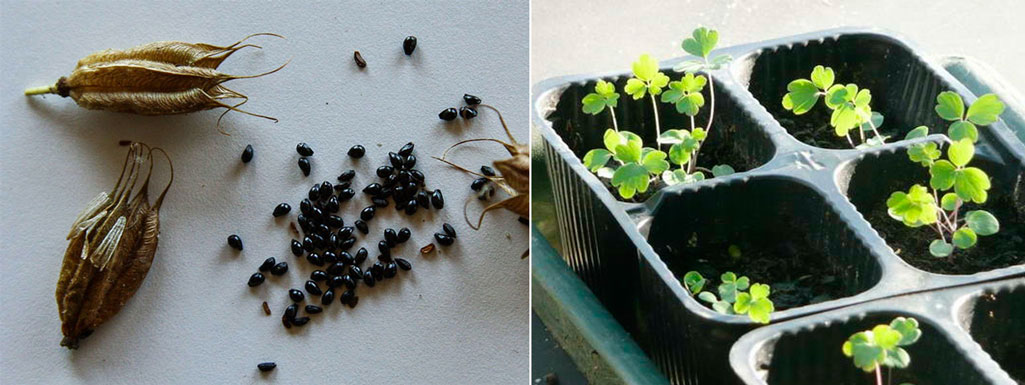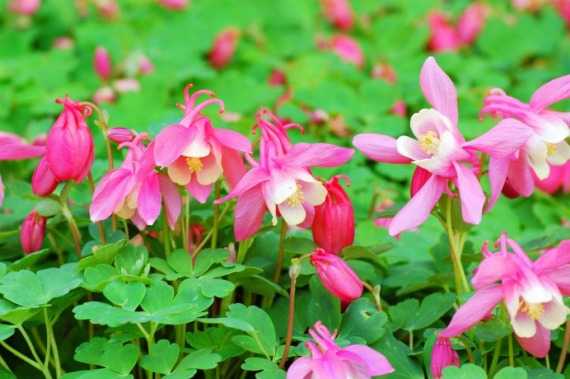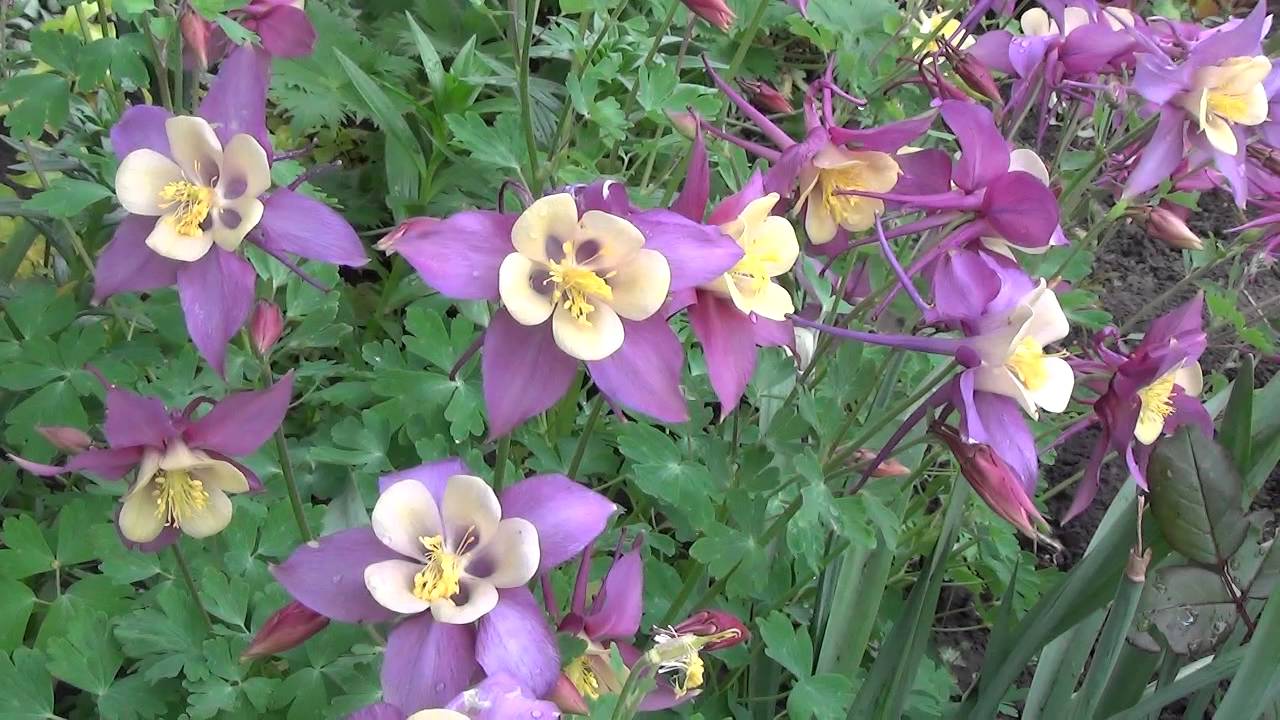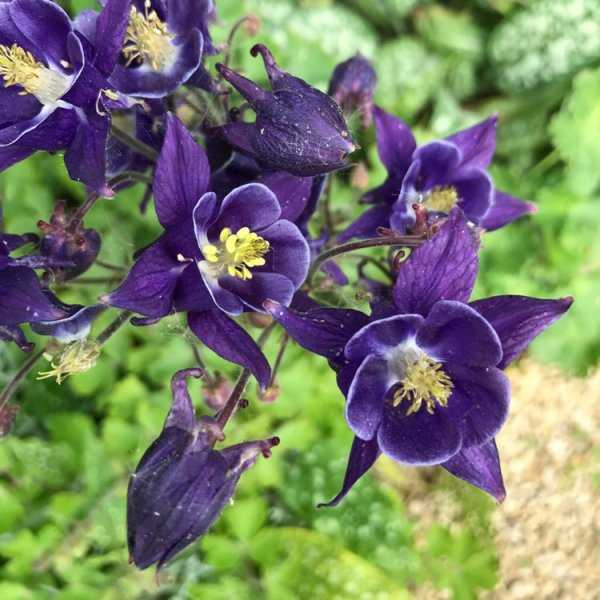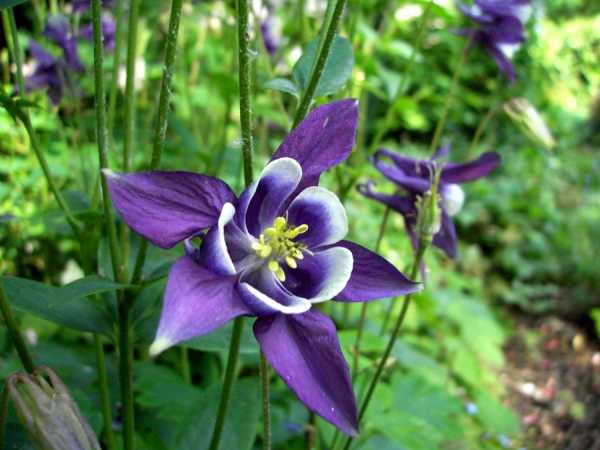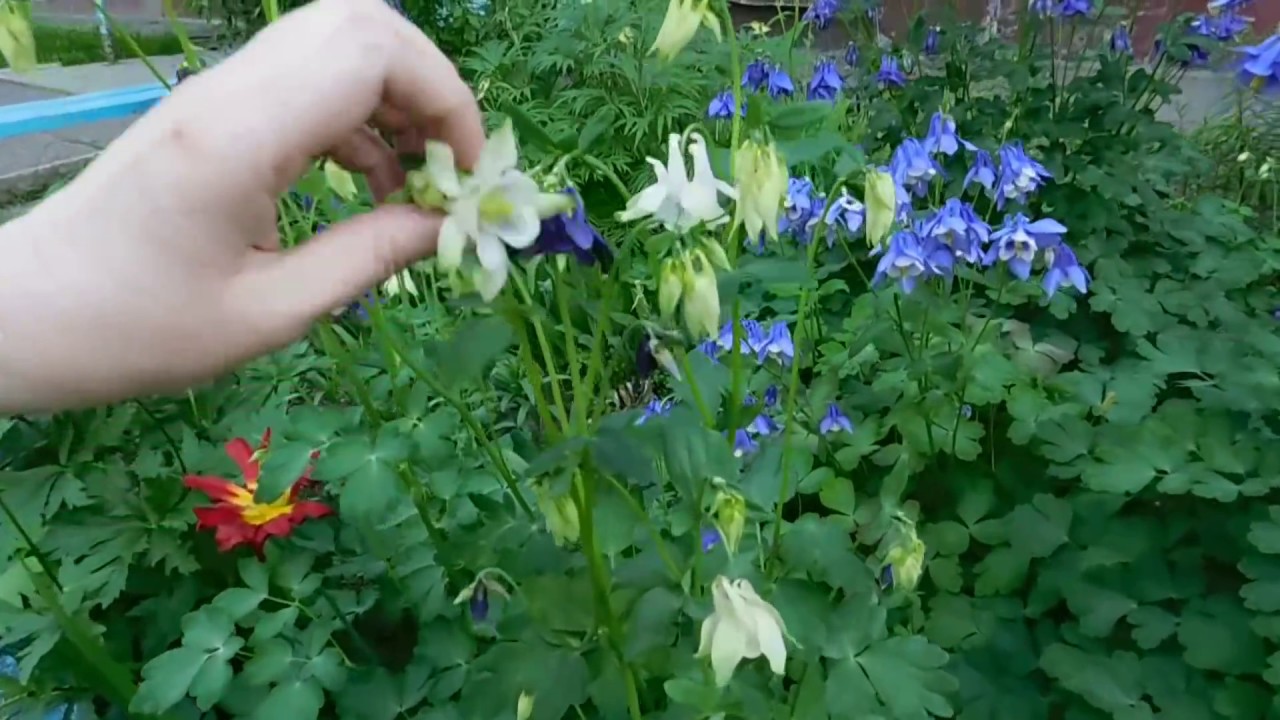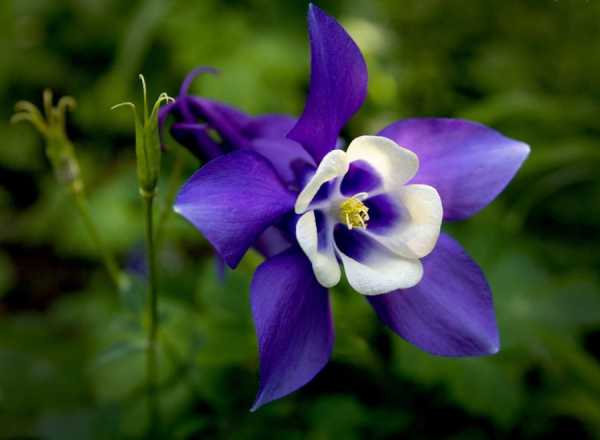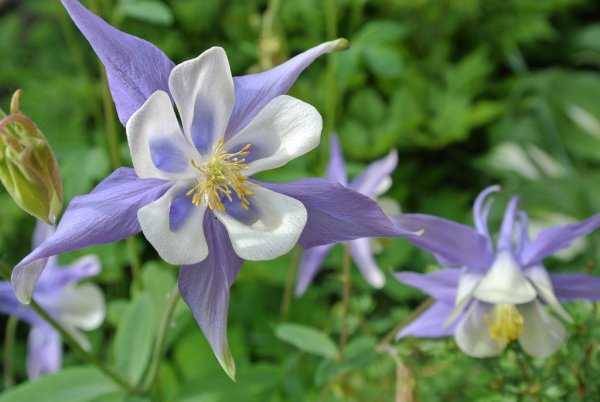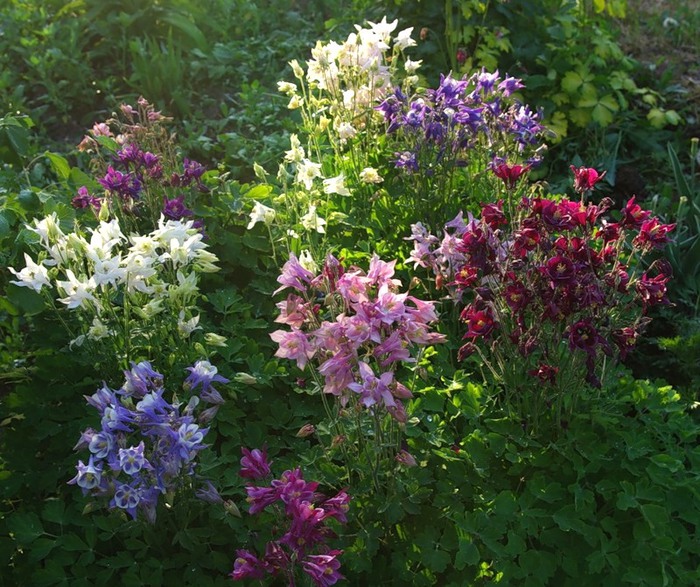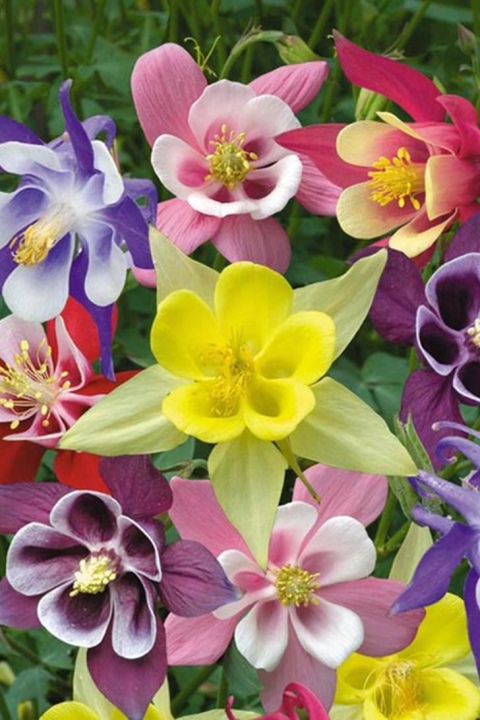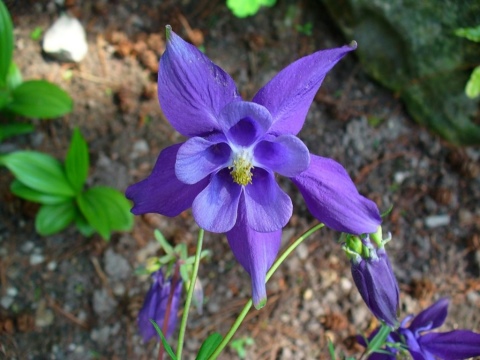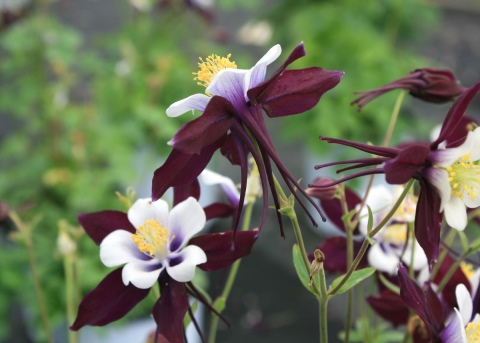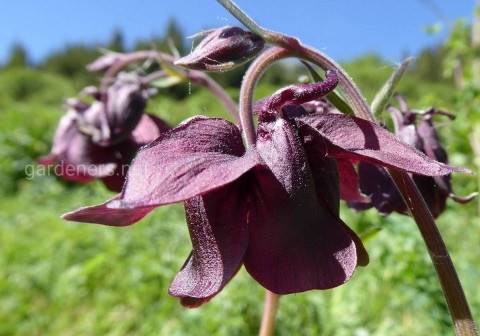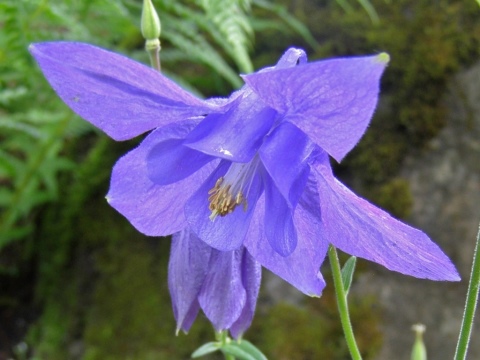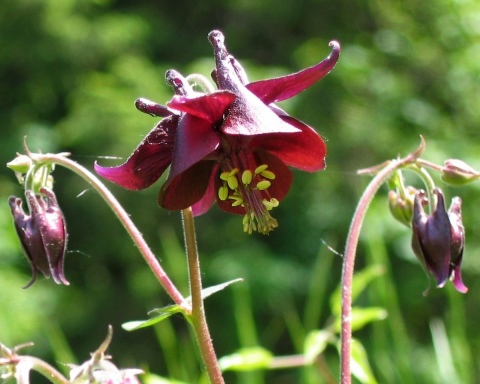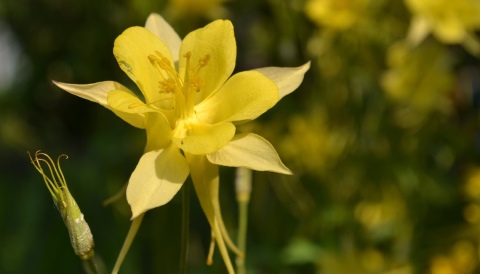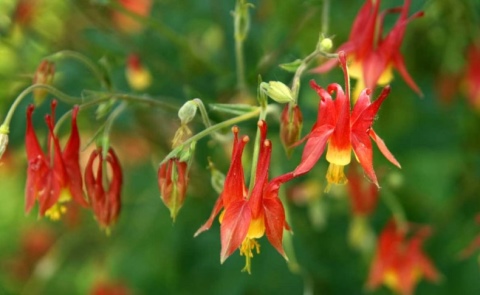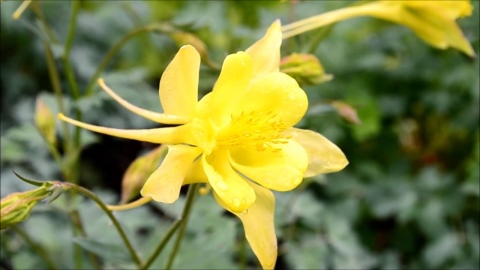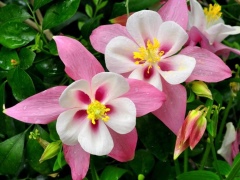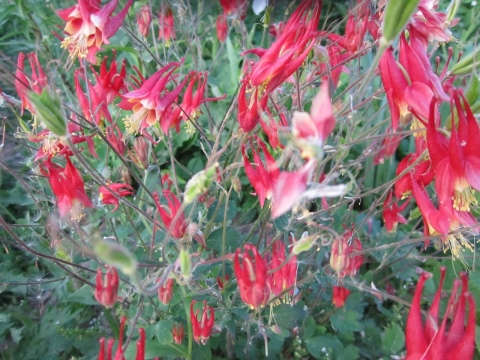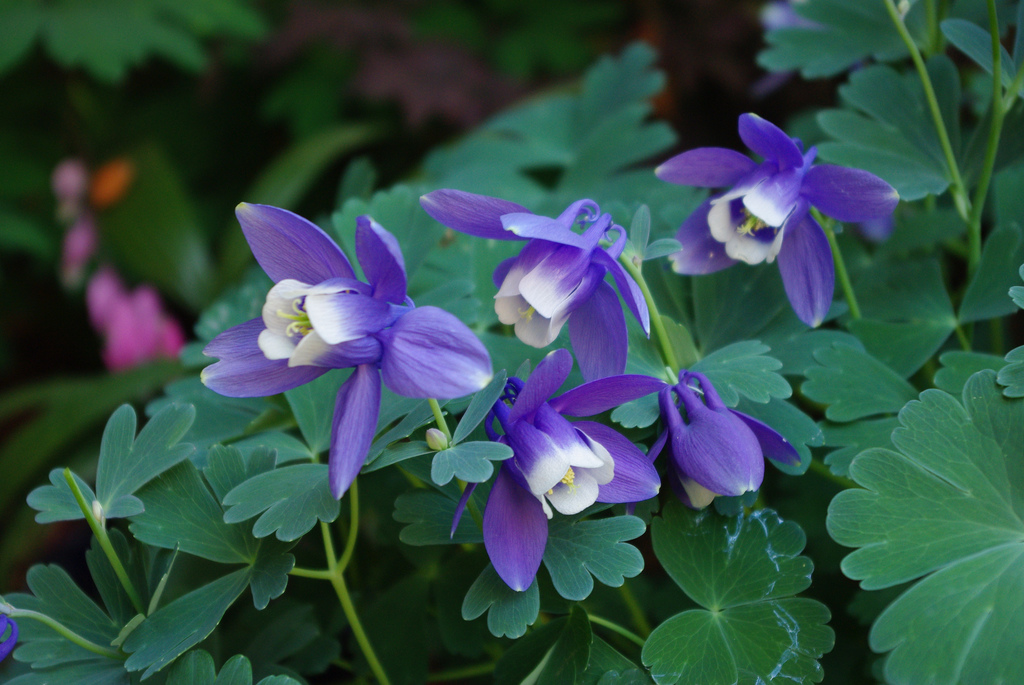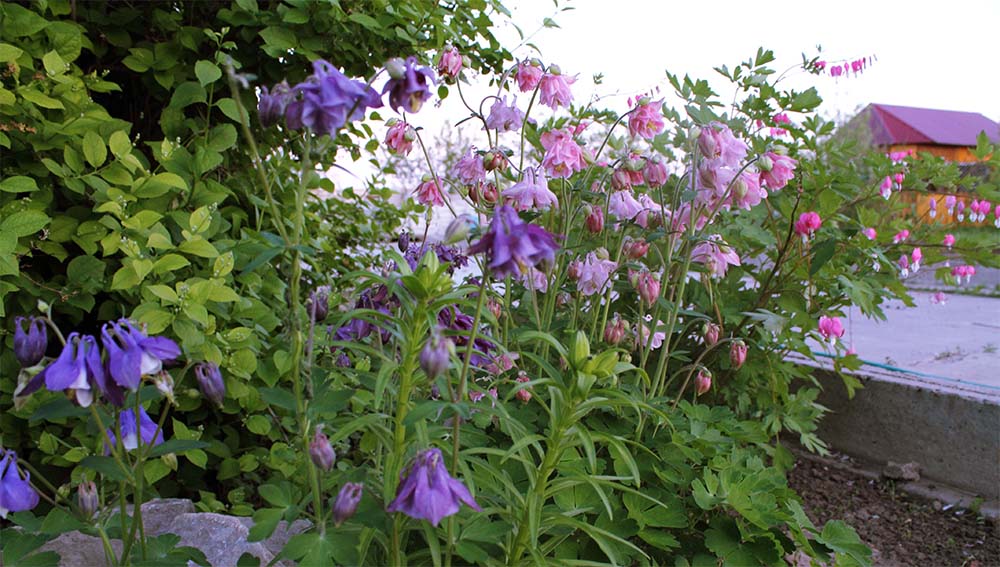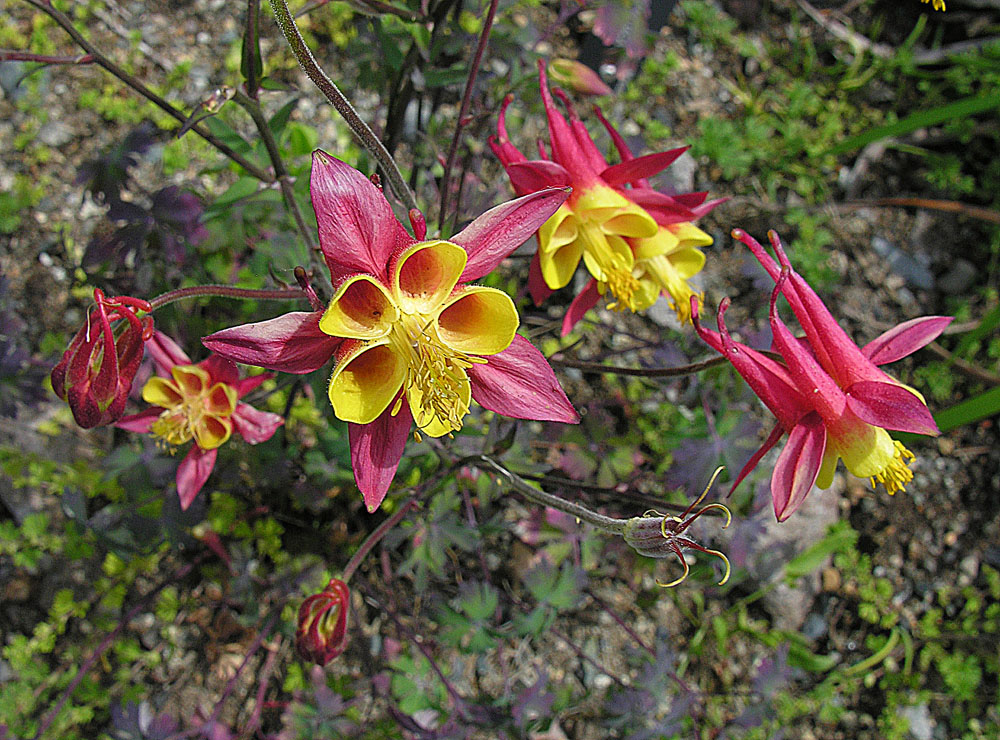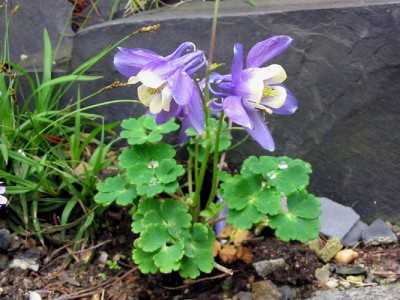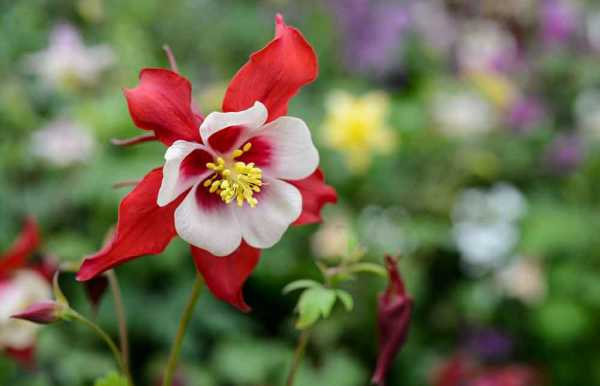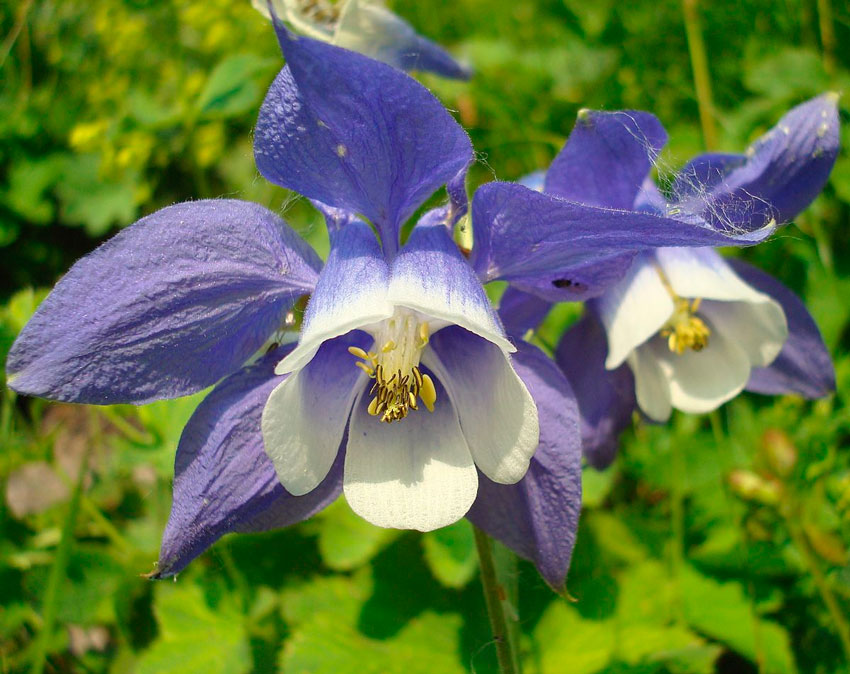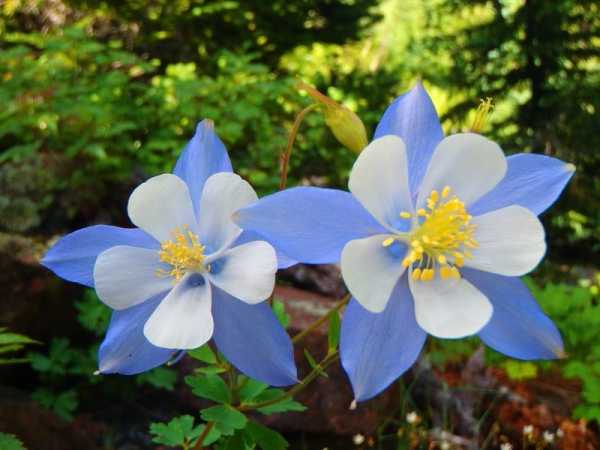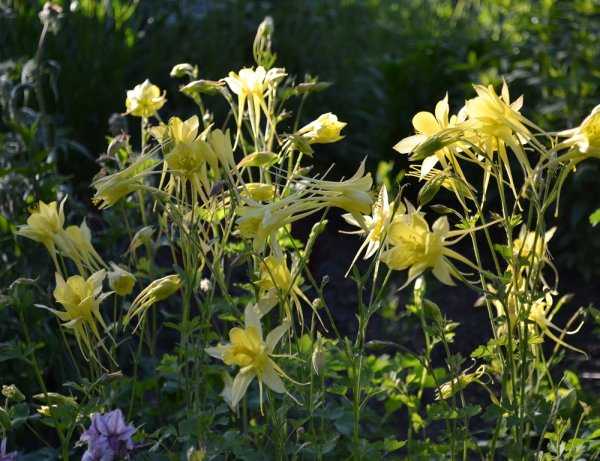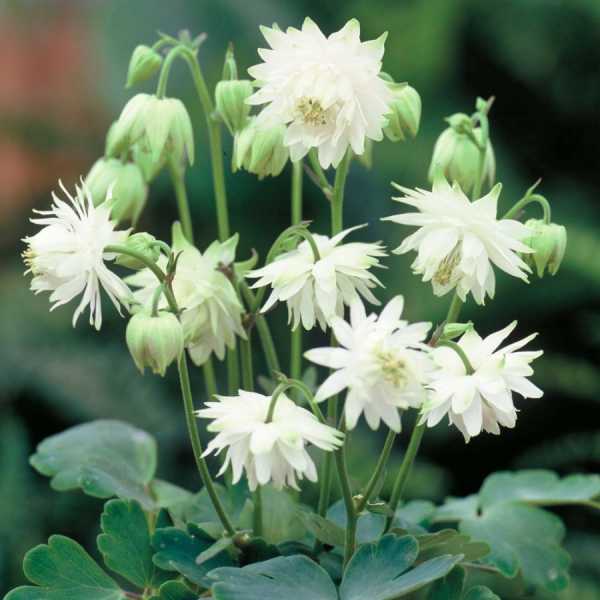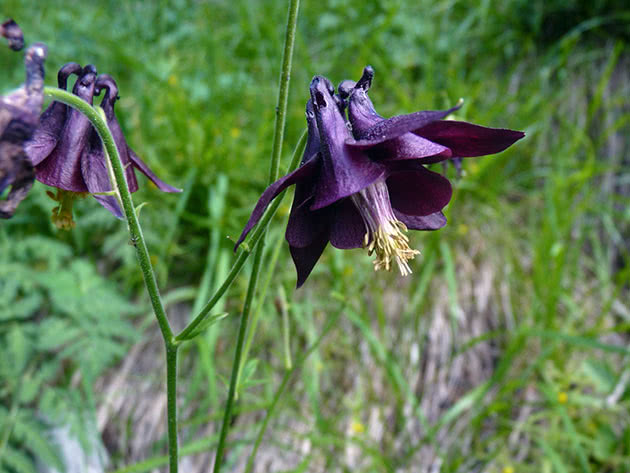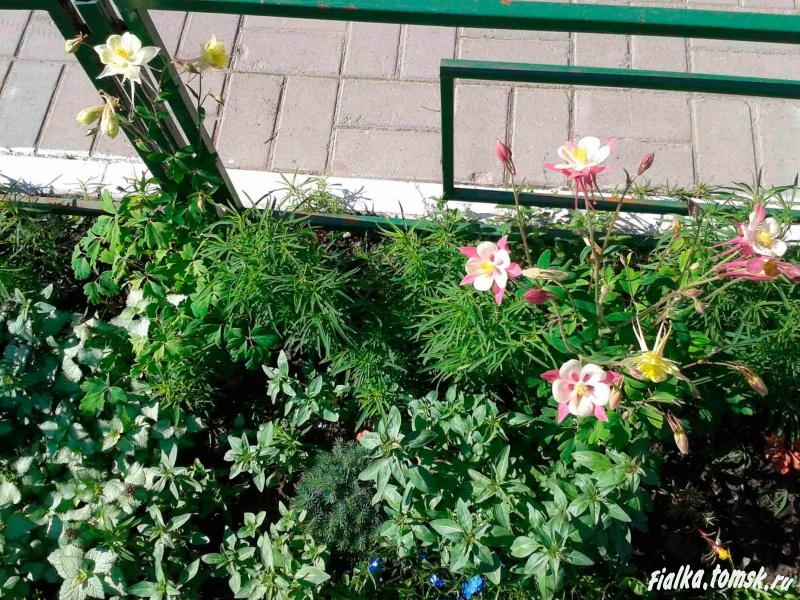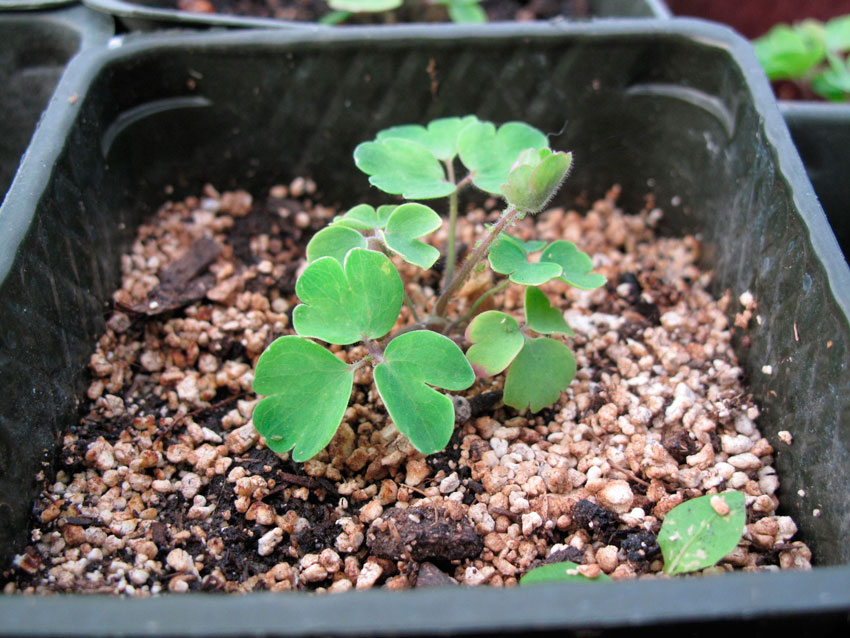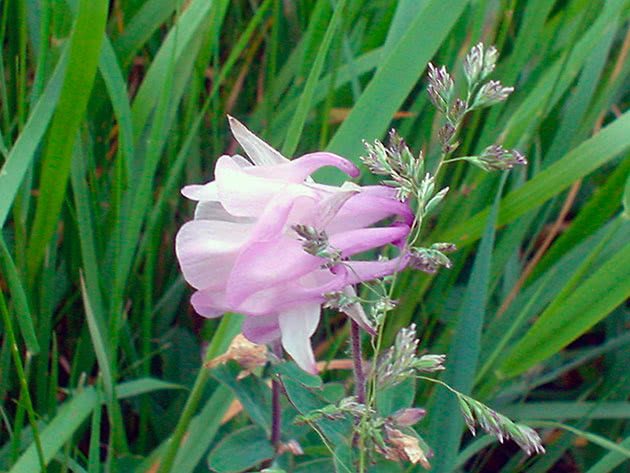Planting and leaving
Aquilegia is an unpretentious plant that requires a minimum amount of attention and care. Despite this feature, before purchasing a plant, you must carefully study the nuances of its cultivation.
The choice of a planting site is an important stage in the conduct of agrotechnical work, on which the intensity of plant growth and the number of formed inflorescences depend. Aquilegia prefers to grow in areas with light partial shade, but completely shaded and sunny places should be avoided.
The soil in the selected area should be loamy and moderately moist. Before planting, you will need to dig up the area and get rid of weeds. The flower bed must be enriched with organic fertilizers. The distance between the bushes should not be less than 20 cm. The planted plants should be watered abundantly, and the entire root zone should be mulched. In the year of planting, one should not expect abundant flowering from the flowers, the mass formation of buds will begin in the second year of the life of the bush.
Caring for a flower in an open field is a complex of simple measures, which consists of moisturizing and loosening the soil, applying fertilizers and carrying out regular pruning. Aquilegia refers to moisture-loving plants that need regular watering.
Watering frequency depends on the ambient temperature. Moistening the soil should be carried out only after its top layer has completely dried. It is necessary to water the flower not at the root, but by the irrigation method, as a result of which not only the roots, but also the leaves are saturated with moisture. If there is enough rainfall in the summer, then you can do without watering.
To maximize oxygen access to the root system, experienced gardeners recommend loosening the top layer of the earth after each watering. To prevent mechanical damage to the roots with garden tools, it is impossible to deepen more than 20 cm. Simultaneously with loosening the soil, it is necessary to carry out the removal of weeds, which take up a large amount of nutrients. Due to the constant subsidence of the soil and exposure of the root system, it is necessary to huddle the plants a little while loosening the soil.
This flower reacts positively to regular application of mineral and organic fertilizers, which can be carried out during the entire growing season. Top dressing is best done in cloudy and rainy weather or in the evening after watering.
In the fall, after flowering, it is necessary to carry out sanitary pruning of the bushes. For removal, you must select dry, damaged and diseased branches. To prevent the roots from freezing, it is necessary to mulch the root zone with peat or chopped bark at the end of autumn.
Failure to follow the rules of care can provoke the development of the following diseases:
- powdery mildew;
- mosaic;
- gray rot.
Caterpillars, aphids and ticks can spoil the appearance of the plant. In case of detection of the first signs of illness or the presence of insects, it is necessary to treat all green spaces with special chemical and biological preparations.
How to propagate aquilegia
We have already described above how aquilegia can be propagated by seed. But here's the bad luck: if you liked a particular variety, the seed method of propagation is not an option for you. The fact is that in the front garden or on the flower bed, aquilegia are pollinated and actually interbreed with each other. Therefore, a catchment grown from self-collected seeds in a flower bed is unlikely to resemble the plant that gave you the seed.If you want to grow a “baby” that will be identical to the mother flower, use other aquilegia propagation methods. For example, grafting or dividing a bush.
Cutting aquilegia
Cuttings in this case are young root rosettes, on which leaves have not yet appeared. Cuttings should be separated and planted in the spring or fall. For more information on how to do this, read below.
- Manually break off the root rosette as close to the ground line as possible.
- We use a special powder that stimulates the formation of roots to process the cut site.
- We mix river sand and peat in equal proportions, fill the container with this substrate and moisten it thoroughly.
- We deepen the planting material literally one centimeter and manually tamp the substrate well around the outlet.
- We shade the sockets from direct sunlight and water them regularly until rooting. After this happens, watering can be minimized.
- It is advisable to organize a greenhouse over the "baby" from a plastic bottle or can. The cap must be removed periodically, giving the "baby" the opportunity to breathe fresh air.
Dividing the aquilegia bush
Dividing a bush is far from the most effective way of reproduction, since damage to the root system can lead to the death of aquilegia: both the one that is being separated and the one from which it is separated. However, there are situations when division is the only way out. For example, when the plant is more than five years old and in fact the bush itself breaks up into separate parts that require planting. Well, or when a florist in whatever no matter how you want to multiply a particular variety, preserving all its characteristics.
- Carefully dig out the rhizome, take a sharp knife and cut the root in such a way that at least two buds remain on each of the resulting divisions.
- We plant each division in a separate hole, water it well and stop watering at this. Next time, the soil will need to be moistened only if precipitation is absent for a long period.
It is not recommended to feed aquilegia cuttings planted in the ground. You can start applying fertilizers under the bush only after the plants fully adapt to the new realities and take root.
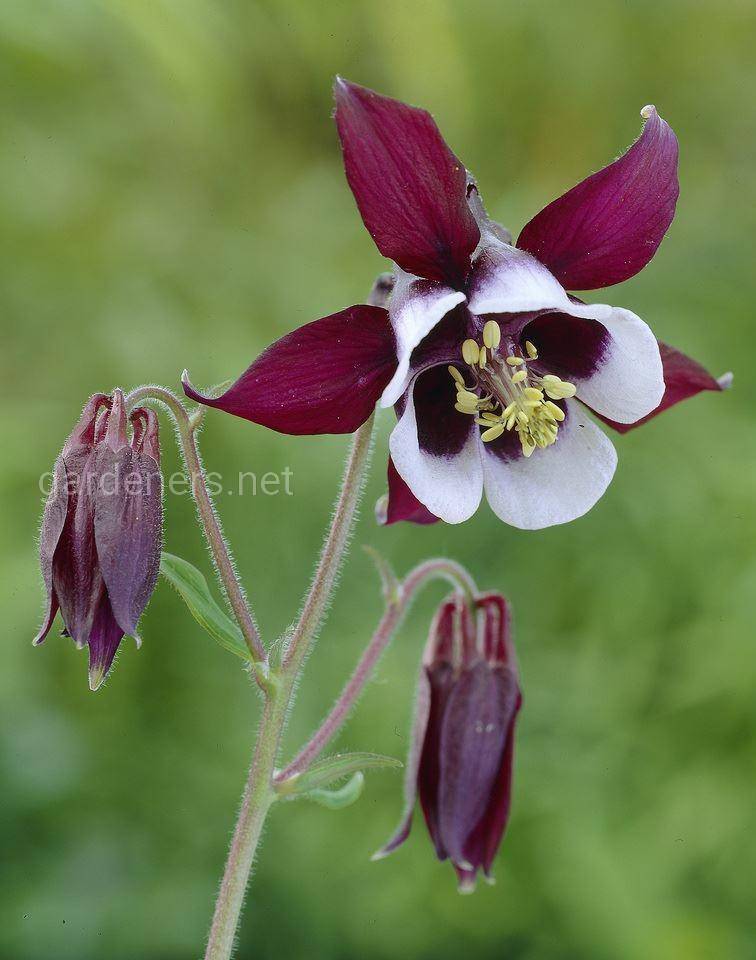
Aquilegia vulgaris (Aquilegia vulgaris)
One of the most widespread and popular types of aquilegia, which grows in our country, and, in fact, throughout Western Europe, not counting the mountainous regions of this part of the land.
The average plant height is 0.8 meters. The bush is quite sprawling - up to half a meter in diameter. Common aquilegia was cultivated earlier than anyone else - in the middle of the fourteenth century. It blooms with purple, pink and white inflorescences and is not afraid of frosts up to 35 degrees. Below are several varieties of common aquilegia with their brief description, according to which you can choose a catchment for your flower garden:
- Woodside Double - an unusual variety, the inflorescences are painted in purple-blue shades; the variety is characterized by inflorescences of a terry structure;
- Flore Pleno Black is an amazing varietal variety, the color shade of which is called dark red, but from a distance it seems that it is almost black; inflorescences also have a terry structure;
- “Green apple” - a variety in which flowers are painted in an unusual greenish-white color - the shade of an unripe apple;
- Granny's Bonnet - a distinctive feature of this variety is the number of petals that make up the corolla: there are more of them than in the flowers of other varieties, so it seems that the inflorescences are more lush and voluminous;
- Nivea - the variety named after the face cream (this is, of course, a joke), by a strange coincidence, it has the same color scheme as the brand of the same name: white and blue;

- Silver Edge - the flowers of this varietal variety are at first whitish, but over time they turn into a distinct lilac color, and the white in color becomes less and less;
- Pom Crimson - a variety that is attractive for its terry corolla structure; the color of the flowers is brownish, not the brightest, but the flowers themselves are quite lush and elegant;
- Peachy Woodside — An unusual varietal variety that has a trendy powdery petal color; the leaf plate of the variety is distinguished by a yellowish tint.

Botanical description
The aquilegia culture has been known for a very long time. Therefore, historically, it has a special meaning not only for flower growers, but also for ordinary people.
So, for example, in Shakespeare's play "Hamlet" - the flower of aquilegia, or, as it is called in England - Columbia, Ophelia offered Laertes.
In this play, the special meaning of the flower is revealed. Shakespeare shows us the plant as a symbol of betrayal, infidelity and vicious love. This is because most types of aquilegia are poisonous.
Moreover, not only the fruits, but also the flowers themselves during the budding period. Despite this, the plant has been actively used from time immemorial as a medicinal. The Indians, for example, still consume the plant today, but only in a few natural varieties that are common in North America.
Therefore, he was often sketched in paintings by famous creators. But, calling the perennial aquilegia, scientists make a completely different meaning. According to some sources, the name comes from two words - aqua (water) and legere (to collect or collect).
This is where one of the popular names may have gone - catchment. Other sources say that the name of the plant comes from one Latin word - aquila, which literally translates into Russian as "eagle". And this was the reason to call aquilegia eagles.
If we talk about the botanical description of aquilegia, then it should be noted that this is a very extensive genus of the Buttercup family. According to some data, about 100 varieties are known in the world, according to others, no more than 75 species have been introduced into culture and are actively used in horticulture.
The most active aquilegia catchment is found in Europe, America and Asia (China and Japan). Russian and European botanists are engaged in the selection of new hybrid varieties, having the largest number of species at hand.
The main zone of distribution of the aquilegia flower is the northern mountainous regions. The vast majority of natural species are found here. In the wild, a perennial grows like a small bush, up to 40 cm high. There are cultivated hybrids up to 1 meter in height.
Aquilegia stems are elastic, formed exclusively during the flowering period - from the beginning of summer to the end of August. These are leafy shoots up to 1 meter in height. In some species, they branch well.
In the fall, as soon as the aquilegia stops blooming, a new bud is formed. It is needed to restore growth. A leaf rosette is formed from the bud. It overwinters and is replaced by new leaf blades in the spring.
Leaves in a rosette at the surface of the earth have long petioles. Those on the stem are sessile. Leaf shape, dissected into 2-3 lobes. Stem leaf plates are trifoliate. The leaf surface has a unique lotus effect: low water wettability. The same effect can be observed with nasturtium.
Monochrome varieties exist and are as popular as two- and three-color hybrids. The corolla consists of 5 petals, which are rolled into a funnel with a wide oblique cut. Also, the vast majority of species have spur. They carry a lot of nectar.
Depending on what the spur is, you can determine the belonging of the plant to one or another species. Botanists distinguish several large groups:
European - the spur is bent into a hook or looks like a ring.
The main types are Alpine Aquilegia and Common. Plants with blue, white, pink flowers are more common.
American varieties - the nectary is straight and long, in nature it is pollinated by hummingbirds and hawk - Skinner's aquilegia, Blue and Golden.
Chinese or Japanese, also called Star-shaped aquilegia - flowers do not have a spur. The group is also characterized by flowers of pink, white and blue hues.
After the flowering of the aquilegia, a multileaf is formed. It is a fruit with small black seeds. The planting material is poisonous. It remains viable for up to 1 year.
These photos clearly demonstrate the description of the aquilegia flower in all its glory:
Care
This flower is unpretentious to care for, resistant to drought and indifferent to regular watering. Abundant watering can provoke a decrease in flowering. Use a watering can to simulate rain as the soil dries. The elongated root will find moisture at depth. If you want the aquilegia to have large flowers, then by all means plant it in partial shade. If you decide to plant in the sun, then you will shorten the flowering period, and the flower will become small.
For this, humus or other organic and mineral additives are suitable. Watering with fertilizers must be carried out directly under the root, without affecting the leaves. Sprinkle fresh, fertile soil under each bush every year. The main requirements for good growth and flowering are frequent weeding and plowing of the land. These methods promote air access to the root system and disinfect the soil from pests.
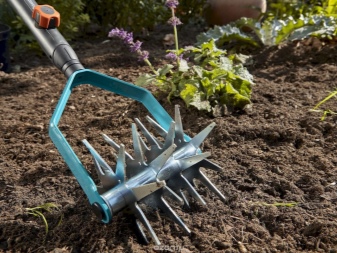

If you do not want the stand of the catchment to thicken, do not allow self-seeding. Remove flowers after flowering. To collect the seeds, bandage the ripe fruits with gauze until they are completely dry. The optimal life of the bush is up to 5 years. After that, the flowering loses its large size, and the foliage will not be so saturated. The roots grow and protrude through the soil, so they can freeze in winter. To prevent this, in the fall it is necessary to sprinkle them with peat or leaves with soil. This will protect the root system from frost.
The catchment area has a special structure, so it does not tolerate transplanting well. The plant may die. But if it is still necessary, try to do it at the beginning of autumn, before the onset of frost, so that the root in a new place will adapt and get stronger.
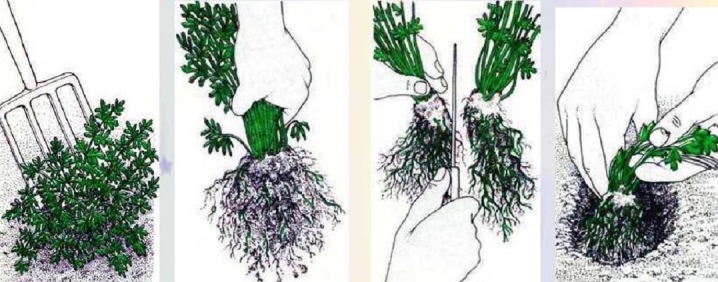
Planting aquilegia seeds in autumn and spring
There are several ways how aquilegia propagates: by seeds (including self-sowing), dividing the bush and cuttings. Adults do not tolerate vegetative reproduction well, even to the point of death! Seeds, on the other hand, quickly lose their germination, so they are sown before winter, followed by a pick to a permanent place (at the end of May).
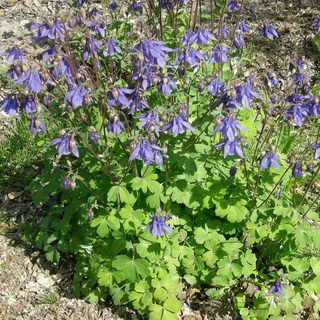

Planting aquilegia with seeds is done immediately after harvesting in autumn or spring in open ground or boxes. When sowing in autumn, the seedlings are more friendly.
For spring sowing, seeds are recommended to be mixed with soil and frozen in the snow or kept in the refrigerator.
Seeds sown in spring must be covered with a covering material and gently watered from above from a watering can after 3-4 days in small doses of 2-3 liters per 1 sq. m, and only after 25-30 days shoots will appear, and then the covering material is immediately removed from the garden
Seedlings appear in 20-30 days. The optimum temperature for germination is + 16–20 ° C. Seedlings dive into the beds when the first one or two true leaves appear.
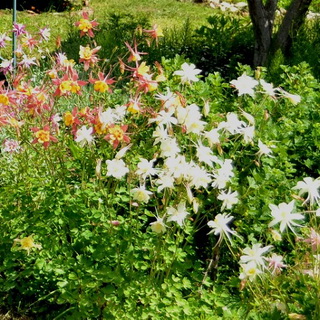
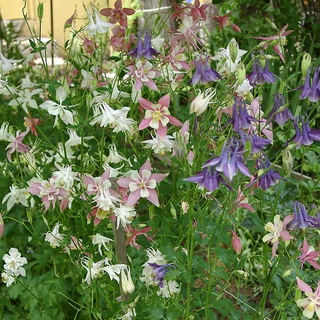
With proper cultivation and good care of aquilegia outdoors, young plants bloom in the second year, reaching full development in the third year. All species easily form hybrid forms when cross-pollinated. Low-growing forms are planted at a distance of 25 cm from each other, higher ones - up to 40 cm.
Often, catchments in permanent planting sites give abundant self-seeding, which can be carefully dug up and transplanted to another place or left between mother plants.The specimens from which they want to collect seeds are recommended to be planted away from others in order to avoid cross-pollination if possible, but it is better to use gauze isolators and pollinate the flowers with an artificially soft watercolor brush, rinsing it thoroughly and drying it after each pollination.

